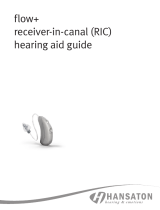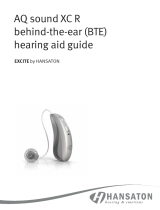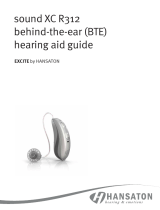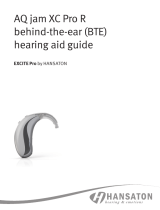
30 31
Assistive listening devices
Listening in public places
Telecoils pick up electromagnetic energy and
convert it into sound. Your hearing aids may
have a telecoil option that can help you listen in
public places equipped with telecoil compatible
assistive listening devices such as a
loop system. When you see this symbol,
a loop system is present and may be
compatible with your hearing aids. Please
contact your hearing care professional for more
information on loop systems.
5. Caring for your hearingaids
Protecting your hearing aids
• Diligent and routine care of your hearing
aids and charger contribute to outstanding
performance and a long service life. To ensure
a long service life, Sonova AG provides a
minimum of a ve year service period aer
phase out of the respective hearing aid.
• Always remove your hearing aids when
using hair care products. The hearing aids
can become clogged and cease to function
properly.
• Do not wear your hearing aids in the bath or
shower or immerse them in water.
• If your hearing aids do become wet, do not
attempt to dry them in an oven or microwave.
Do not adjust any controls.
• Protect your hearing aids from excessive heat
(hair dryer, vehicle glove box or dashboard).
• Ensure you do not twist or squeeze the wires
when your hearing aids are placed in their case.
• Do not drop your hearing aids or knock them
against hard surfaces.


























